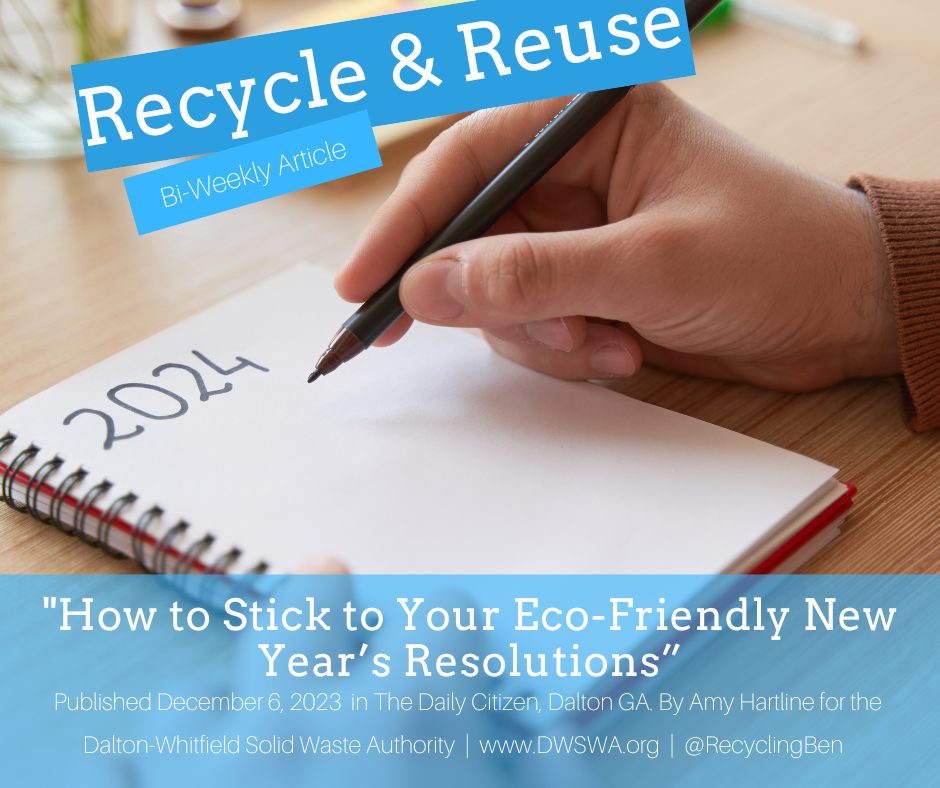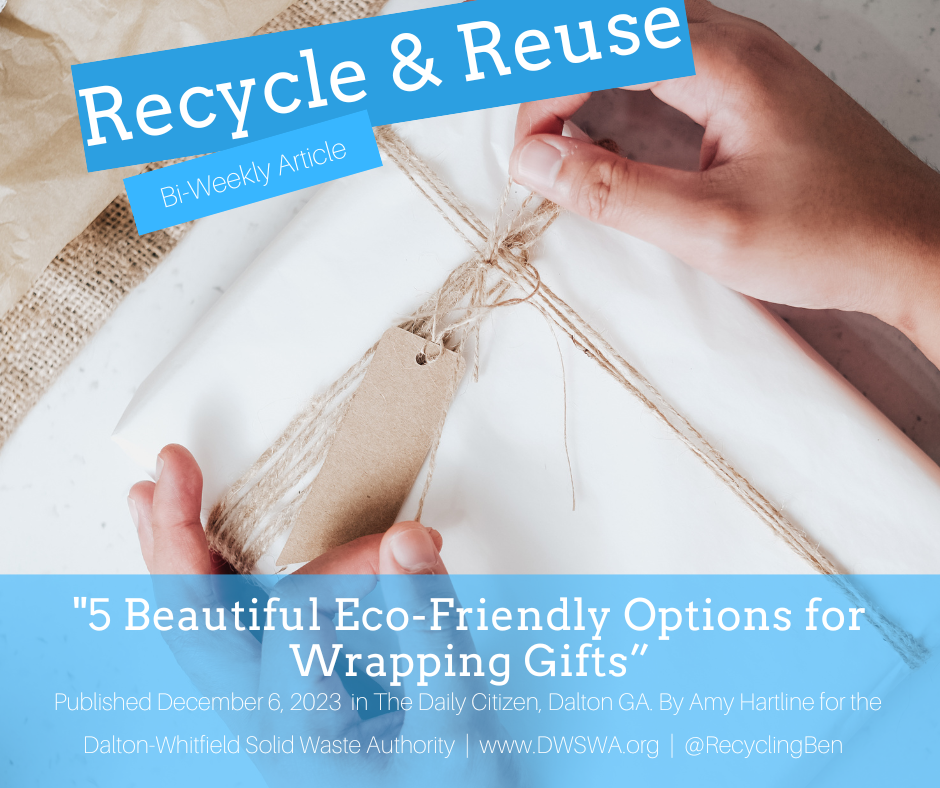Why Bother Recycling the Right Plastics?
/We use plastic all day long. We use our plastic #5 yogurt cup in the morning, our plastic #1 water bottle at lunch, and our plastic #2 shampoo bottle at night. It can be confusing determining which of these plastic items go in the recycling bin and which go in the trash especially since it can be different depending on where you live or are traveling. Furthermore, why should you even bother to learn the rules and not just throw it all in the trash? Because plastic is meant to be durable it can clog up our landfill space for centuries. Recycling it reduces our fossil fuel consumption and it creates more jobs. Putting the wrong plastics in the bin can lead to contamination of actually recyclable materials and slow down the recycling process, making it more costly for you to recycle.
In Whitfield County and Dalton, we have an exceptionally good reason to recycle our PET or #1 plastics like water bottles; Carpet! Northwest Georgia recycles one third of the PET bottles produced in America every year. By recycling your water bottle, you are creating multiple jobs in the same community that you live in.
Got milk? Make sure you recycle it! A 60-watt lightbulb could be powered for six hours with the energy saved by recycling one plastic milk jug. And considering that four pounds of petroleum are required to make two pounds of plastic #2 for milk jugs – not recycling the jug is like throwing oil down the drain and wasting it.
I get calls all the time about what kinds of plastic can be recycled. Part of the confusion is that the recycling symbol, a triangle with chasing arrows, was used to enclose the identifying number for the types of plastic used to create an item. This gave the impression that the plastic was recyclable anywhere.
However, recycling services are local and limited by what a community’s recycling center can process. For example, in Whitfield County and Dalton the recycling programs only accept plastic bottles, jars and jugs with the number one or number two recycling symbol. Meanwhile, products like yogurt cups, which are usually made with plastic number five, are currently not accepted in our community. But because of the recycling symbol surrounding the number five, residents could mistakenly think that the product is recyclable locally.
We can only accept items with a “neck” because of how they are made. The bottles and jugs are made with a blow molding process and the other containers are made with an injection molding process. The injection molding process creates a more stable product. That makes it difficult or impossible to bale correctly to send out to manufacturers. Basically, it's too hard to squish especially without it breaking into a bunch of little pieces. So, anything that is not a bottle or jug is not acceptable. Unfortunately, many of the places that once accepted the other plastics are having to decrease their program or end it entirely due to changes in the recycling markets.
The American Chemistry Council and the Dalton-Whitfield Solid Waste Authority recommend looking at the shape of a container. When choosing bottles, jars and jugs, the majority of the time you will be choosing plastics one and two for recycling. Don’t forget to rinse out the container and leave the label and caps on the bottle before tossing them in your recycling bin.
Next time you use a plastic bottle or jug take a moment to think about where it came from. Taking a step back will help determine how you use and dispose of the product. What was the raw material? How much energy and water did it take to manufacture? Who will handle the item when it is recycled? And, what kind of impact will you leave by recycling it instead of throwing it in the trash?

































